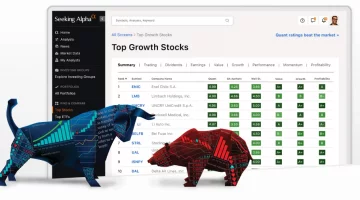Your Guide to Mitigating P2P Lending Risks
If you are planning to enter the P2P lending industry as an investor you must be aware of the fact that the risk is higher as compared to investing your money with traditional financial institutions. While P2P platforms promise you higher returns and ease of investments they do not guarantee your investments like in case of other investment options. But if you are smart enough with your choice you can very easily reduce P2P lending risks. Here we look at some of the ways in which you will be able to mitigate risks and see your investments grow exponentially.
Choose Platform Carefully
Before you start investing on a P2P lending platform you need to choose a platform wisely. The first step to this process is verifying the reputation of the platform you are planning to invest your money in. How big is the platform in terms of their overall volume? What is the percentage of defaults? What measures do they adopt to reduce P2P lending risks for their investors? You need to find answers to these questions before you put in your money.
Understand The Platform
Next you need to get yourself acquainted with the platform. Now the working model of the P2P lending platforms can be as varied as their names and this is where it is important for you to clearly understand how the platform works. How do they segregate the different groups of borrowers? How do they identify the risk quotient on the borrowers? Do you have the option of choosing the borrowers or in other words avoid your money going to borrowers whom you assume to be risky?
You should try to understand how the online P2P model works before lending money on it. An investor should be aware how the money is lent on the platform and what are the risks involved in lending money on the platform.
Do not hesitate to ask the P2P player about the overall volume, defaults, recovery process and likely returns. You can do your own research or simply contact the P2P Company through emails, chats or phone calls.
What is an Effective Presentation?
An effective presentation is one that establishes strong relationship between the presenter and the audience. In these presentations the speaker prepares the content based on the needs of the audience, their knowledge levels and most importantly creates opportunities for interaction and engagement with the audience. The presenter must focus on inspiring confidence among the audience and achieve the objective of the presentation through discussions and feedback.
Steps to Planning an Effective Presentation
It goes without saying that an effective presentation requires meticulous preparation. In today’s world most presenters leverage technology to make their presentations engaging and effective. The use of a Presentation Management System allows you to make the whole presentation inspirational for your audience and also allows them to engage easily. Let us walk you through few easy steps of preparing an effective presentation –
- Know Your Audience– The first step to preparing for an effective presentation is to have knowledge about your audience. You need to know who they are, their age groups, social stature etc. You need to be aware about their knowledge and familiarity with the subject to be presented during the presentation. For instance if you are speaking about astronomy your presentation for students would have to different for one in front of the scientific community. This knowledge is important as it will help you prepare the kind of presentation that is aligned to the needs, knowledge and aspiration of your audience.
- Create Quality Content - Why you are making your presentation? You need to find answer to this question before you start working on the content of your presentation. The correlation between the content and the objective is often the difference between a boring and an engaging presentation. Once you have defined your objective you can start preparing the content. Here are few things you need to keep in mind –
- The information/data that you want your audience to understand
- The actions/decisions you want them to take after making your presentation
- The best methods in which the content can be created to meet these goals
The best presentations are the ones where there is lot of visual content. The use of charts, graph and other audio-visual components makes the presentation interesting and engaging. This also saves you from having to explain the minutes of details reading out paragraphs of text. Since Presentation Management Systems support different types of file systems you can easily incorporate images, videos or audio files into your presentation. If you are big fan of Microsoft PowerPoint or other similar tools you can create content using these tools and easily upload them into the PMS.
- Focus on Quizzes/Polls- To maintain high level of attention among your audience throughout the presentation you can focus on including periodic quizzes and polls during your presentation. Audience Response Systems and mobile applications allow you to conduct these polls and quizzes easily. The results for these can be displayed on the big screen immediately. Apart from engaging your audience this also ensures you would be able to ascertain your audience’s level of knowledge, knowledge retention of what you have presented and also the opinion they have with respect to your presentation.
- Run Tests – If your presentation is a part of training or educational program it would be wise to incorporate small tests during the presentation. This will allow you to assess your trainee’s midway through the presentation. Along with this you will also be able to revise some of the complex concepts presented where the students are facing difficulty.
- Encourage Questions & Feedback – The idea behind using a Presentation Management Systems is to break the monotony of traditional presentation. Don’t let your audience sit at the venue as passive listeners but make them an integral part of the presentation. Encourage them to ask questions where the Audience Response System can be used. This will allow you to resolve their doubts and queries and also add new and meaningful ideas to your presentation that benefits everyone. Similarly you should ask all the attendees to share their feedback at the end of the presentation as this will improve your own standing.
To conclude an effective presentation requires meticulous preparation and you need to prepare one thoroughly and make use of the features and the possibilities offered by a Presentation Management System.
Summary – In this write-up we discuss some of the ways in which an effective presentation needs to be planned and how it can help you engage your audience.
More to Read:
Previous Posts:








